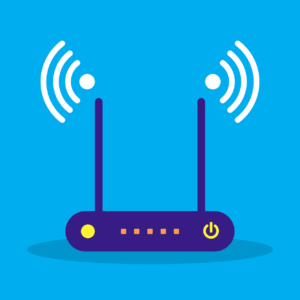Wireless Antenna Essentials for CCNA
Wireless antennas are a critical component of any wireless network, as they are responsible for transmitting and receiving wireless signals between devices. In addition, a good understanding of wireless antenna essentials for CCNA candidates is a “must have” before taking the exam. Therefore, in this post, we will cover the following topics related to wireless antennas:
- Antenna Types
- Antenna Gain
- Antenna Polarization
- Antenna Diversity
- Antenna Placement
Wireless Antenna Types
Wireless networks use several types of antennas. For example, the most common types are:
Omnidirectional Antennas:
These antennas transmit and receive signals in all directions. For instance, they provide coverage in all directions for wireless access points and other devices that need it.
Directional Antennas:
These antennas transmit and receive signals in a specific direction. For example, long-distance point-to-point connectivity often use directional antennas as it requires single direction transmission..
Yagi Antennas:
These antennas are a type of directional antenna that use multiple elements to increase the gain and directionality of the antenna. For instance, outdoor wireless applications often use them at long range.
Patch Antennas:
These antennas are a type of directional antenna that are flat and rectangular in shape. For example, indoor wireless applications often use them.
Wireless Antenna Gain
Antenna gain is a measure of the antenna’s ability to focus and amplify the wireless signal. In addition, decibels (dBi) measure gain, with higher values indicating a stronger signal. Moreover, physical design determines the gain and the materials used to construct it.
When selecting an antenna, it is important to consider the gain of the antenna in relation to the distance and direction of the devices that will be communicating. In addition, a high-gain antenna may be beneficial for long-distance point-to-point connectivity, while a lower-gain omnidirectional antenna may be more appropriate for providing coverage in a small area.
Wireless Antenna Polarization
Antenna polarization refers to the orientation of the antenna’s electromagnetic field. For instance, the two most common types of antenna polarization are:
Vertical Polarization:
The electromagnetic field is oriented in a vertical direction, perpendicular to the ground.
Horizontal Polarization:
Horizontal direction orientation of the electromagnetic field, and parallel to the ground, results in horizontal polarization.
When selecting an antenna, it is important to consider the polarization of the antenna in relation to the polarization of the other devices in the network. In addition, a weak, disrupted signal results with poor antenna polarization alignment.
Antenna Diversity
Using multiple antennas for transmission and reception of signals (antenna diversity) improves wireless network reliability. There are two types of antenna diversity:
Spatial Diversity:
Transmitting and receiving signals from different locations using multiple antennas defines spatial diversity. This technique helps to mitigate the effects of interference and signal fading.
Frequency Diversity:
Transmitting and receiving signals on different frequencies defines frequency diversity. This technique helps to mitigate the effects of interference from other wireless networks.
Use multiple antennas on a single device, or multiple devices with separate antennas to implement the antenna diversity technique.
Antenna Placement
The placement of wireless antennas is an important factor in the performance and reliability of a wireless network. When placing antennas, it is important to consider the following factors:
Line of Sight:
The antennas should have an unobstructed line of sight to each other, which helps to minimize signal loss and interference.
Height:
The antennas should be placed at a sufficient height to provide optimal coverage. The height of the antenna will depend on the type of antenna and the distance between the devices.
Environment:
The environment in which the antennas are placed can have a significant impact on the performance of the network. Factors such as walls, metal objects, and other wireless networks can cause interference and signal degradation.
Orientation:
The orientation of the antenna should be adjusted to optimize the signal strength and minimize interference. For example, directional antennas should be pointed directly at the other device, while omnidirectional antennas should be placed vertically to maximize coverage.
Antenna Type:
The type of antenna used will also affect the placement. Omnidirectional antennas should be placed in the center of the coverage area, while directional antennas should be pointed in the direction of the device they are communicating with.
Wireless Antenna Essential Connector Types
Antenna connectors vary depending on the type of antenna and the wireless device. Some common connector types include SMA, RP-SMA, TNC, and N-type. It is essential to ensure that the connector types match when connecting antennas to wireless devices to ensure optimal performance.
Conclusion
Wireless antennas are a critical component of any wireless network, and wireless antenna essentials for CCNA candidates must be mastered before taking the exam. Understanding antenna types, gain, polarization, diversity, and placement is essential for designing and deploying a reliable wireless network. By considering these factors, a network engineer can ensure that their wireless network provides optimal coverage, performance, and reliability.


Leave a Reply